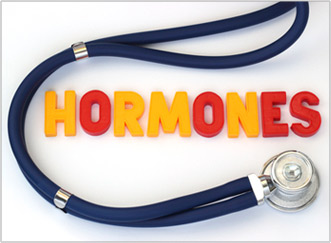Researchers Identify Enzyme Responsible For Increasing Fat Storage In The Belly, Lower Back And Hips

The relationship between stress, cortisol and an increase in body fat has been well established. However, new research has identified a little known enzyme deep within fat cells called 11 beta-hydroxysteroid dehydrogenase-1 or HSD. The HSD enzyme converts the inactive form of cortisol (called cortisone) into the active, fat storing form called cortisol.
Researchers in Germany noted that the rate of activity of the HSD enzyme determines the rate of fat storage in the individual. When individuals were experiencing high levels of HSD activity, no amount of exercise, diet or stress management are able to prevent fat gain.
The activity of the HSD enzyme increases with age. Women and men in their thirties and forties can experience as much a 300% increase in HSD activity compared to an individual in their twenties. This may account to for steady increase in stubborn body fat observed in individuals as they age.
READ AlSO: #1 thyroid-killing exercise to avoid (it blocks weight loss)…
Scientists from the Mayo Clinic have also shown that cortisol can be released via pathways other than the adrenal glands. Fat tissue (as well as the liver and other organs) is capable of producing fat storing cortisol via activation of the HSD enzyme. This cortisol production may actually be greater than that from the adrenal glands and may explain why meditation, yoga and other stress management methods are often ineffective at reducing cortisol and the associated fat gain.
Researchers have concluded that “the regulation of HSD levels is vital to deactivating fat storage and reducing belly fat”.
Recent research into compounds known as flavenoids proves that HSD can be blocked naturally using common foods. In fact, one food in particular contains a substance known as ploymethoxylated flavenoidsor PMFs and can reduce HSD activity 500% more than other flavenoids!
A nutritionist from Toronto, Canada has developed a new cleansing method that deactivates HSD and melts away stubborn fat from areas such as the belly, lower abdomen, hips and thighs. You can discover exactly how this method works by clicking on one of the images below:
READ ALSO: 45 Second Movement Strips Fat and Shapes Muscle (at any age…)
References:
Ayachi, S. E., O. Paulmyer-Lacroix, M. Verdier, M. C. Alessi, A. Dutour, and M. Grino. “11 Beta-Hydroxysteroid Dehydrogenase Type 1-Driven Cortisone Reactivation Regulates Plasminogen Activator Inhibitor Type 1 in Adipose Tissue of Obese Women.” Journal of Thrombosis and Haemostasis, March 2006, 4(3): 621–7.
Bujalska, I. J., M. Quinkler, J. W. Tomlinson, C. T. Montague, D. M. Smith, and P. M. Stewart. “Expression Profiling of 11 Beta-Hydroxysteroid Dehydrogenase Type-1 and Glucocorticoid Target Genes in Subcutaneous and Omental Human Preadipocytes.” Journal of Molecular Endocrinology, October 2006, 37(2): 327–40.
Desbriere, R., V. Vuaroqueaux, V. Achard, S. Boullu-Ciocca, M. Labuhn, A. Dutour, and M. Grino. “11 Beta-Hydroxysteroid Dehydrogenase Type 1 mRNA Is Increased in Both Visceral and Subcutaneous Adipose Tissue of Obese Patients.” Obesity, May 2006, 14(5): 794–8.
Gambineri, A., V. Vicennati, S. Genghini, F. Tomassoni, U. Pagotto, R. Pasquali, and B. R. Walker. “Genetic Variation in 11 Beta-Hydroxysteroid Dehydrogenase Type 1 Predicts Adrenal Hyperandrogenism among Lean Women with Polycystic Ovary Syndrome.” Journal of Clinical Endocrinology and Metabolism, June 2006, 91(6): 2295–302, E-pub 21 March 2006.
Koska, J., B. de Courten, D. J. Wake, S. Nair, B. R. Walker, J. C. Bunt, P. A. Permana, R. S. Lindsay, and P. A. Tataranni. “11 Beta-Hydroxysteroid Dehydrogenase Type 1 in Adipose Tissue and Prospective Changes in Body Weight and Insulin Resistance.” Obesity, September 2006, 14(9): 1515– 22.
Mariniello, B., V. Ronconi, S. Rilli, P. Bernante, M. Boscaro, F. Mantero, and G. Giacchetti. “Adipose Tissue 11 Beta-Hydroxysteroid Dehydrogenase Type 1 Expression in Obesity and Cushing’s Syndrome.” European Journal of Endocrinology, September 2006, 155(3): 435–41. Walker, B. R., and R. Andrew. “Tissue Production of Cortisol by 11 Beta- Hydroxysteroid Dehydrogenase Type 1 and Metabolic Disease.” Annals of the New York Academy of Sciences, November 2006, 1083: 165–84.










